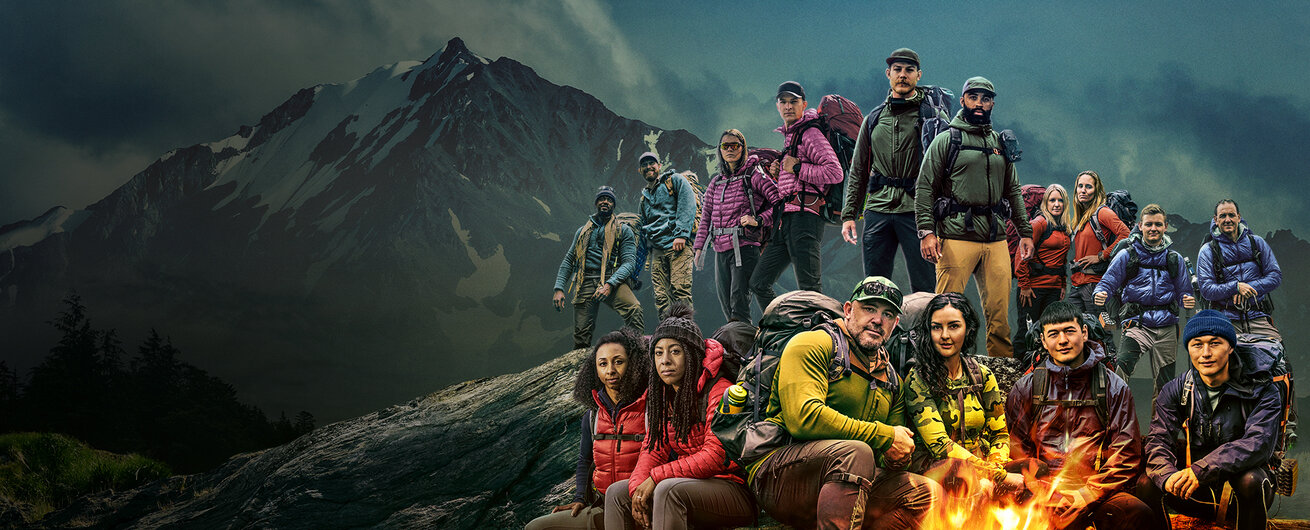How 'Race To Survive: Alaska' Cast, Producers Approached Bear Safety
Alaska is home to a lot of grizzly bears, so how did the cast stay safe on "Race to Survive: Alaska"?

Anyone who plans a trip to Alaska knows that, along with the thermals, boots and moisture-wicking jackets needed for the weather, there's another big thing to plan for: bears! The state is loaded with them, so any drive out even into the 'burbs means having to plan in case your path crosses with the potentially deadly native species.
But what's the plan for a competition reality series like "Race to Survive: Alaska," where eight teams of two are just given the supplies they can carry on their back, a compass and a map? As participants in a 40-day, six-leg adventure elimination race, not being the last to arrive at the finish line means they're one step closer to the $500,000 prize. But bears on the course are arguably nature's biggest speed bump and both the contestants and producers had to consider safety at all times. What's the balance between being competitive and safe?
RELATED: Meet The Teams On 'Race To Survive: Alaska'
"Race to Survive: Alaska" co-executive producer Alan Bishop told USAInsider that "Race to Survive: Alaska" developed strict rules and regulations for the cast and crew for every region the production ventured into while on location.
"The cast were trained extensively in bear awareness before they set foot on the course," Bishop shared. "The basics: leave the bear alone and give it the space it deserves. Alaska is a big, wild landscape with room for both bear and man. And the bear doesn't really want anything to do with man, so let the bear go its own way."
In case close proximity happened, Bishop said cast and crew were told to stop and get their bear spray ready. "Watch the bear and it will most likely go away quickly once it realizes you're not food," he explained. "If the bear gets curious and starts coming your way - make yourself big and let the bear know you're there."
A suggested way to do that is literally saying a loud hello to the bear, like "Hey Bear!" along with some mindful noises.
"If the bear continues coming towards you, then follow the bear spray protocols," Bishop said. "At the end of the day, bears don't want to interact with humans. Be smart and let them go their own way."
When asked how often bears were an issue during the season's production, Bishop said the threat was constant.
"For somewhere like Kodiak, where we're dealing with grizzly bears, [they were] everywhere," he said. "There wasn't a day where we weren't involved in some sort of a grizzly bear situation."
So, they were able to test the protocols in action, often, as audiences will witness even in the very first episode of "Race to Survive: Alaska."
"You see a bear and it's within 200 meters from you, stop," he reiterated. "Nobody moves. And when that bear moves away, if you know it's path and that path is on the same route that you are going, you have to change your route. If you don't, that's nature. You have to wait until it goes away."
Bishop acknowledged bear safety even affected the routes of some teams during the competition.
"Sure, that's going to be on your time, but that's part of racing in wild places," he said. "Everybody's under the same protocol, so it's fair. You can't determine what nature's going do, so everyone's fair on that level."
To see what else the teams come up against, tune in on Monday, April 3 at 11 p.m. ET/PT on USA Network for the "Race to Survive: Alaska" premiere. Catch more survival shows on Peacock now.



